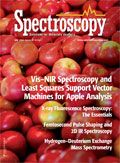Denver X-ray Conference: 62nd Annual Conference on Applications of X-ray Analysis
A brief preview of what to expect at this year's Denver X-ray conference, taking place August 5–9 in Westminster, Colorado.
This year's Denver X-ray Conference will take place August 5–9, at the The Westin hotel in Westminster, Colorado. Here is a brief preview of what to expect from this year's conference, including sessions on training and education, and applications and papers dealing with X-ray analysis techniques and future developments.

(PHOTO CREDIT: PETE MCBRIDE/GETTY IMAGES)
Workshops
Workshops will be held Monday and Tuesday, August 5 and August 6, with morning sessions from 9:00 a.m. to 12:00 p.m. and afternoon sessions from 1:30 p.m. to 4:30 p.m. Topics include "Back to Intermediate XRD Analysis," "Basic XRF," "X-ray Optics," "Energy Dispersive XRF," "Hands-On Rietveld Analysis," and "Sample Preparation of XRF" among many others.
Plenary Session and Awards
This year's plenary session topic is "The 100th Anniversary of X-ray Spectroscopy," and will be chaired by G.J. Havrilla of Los Alamos National Laboratory. The session will take place at 9:00 a.m., Wednesday, August 7, and will kick off with opening remarks from the chairman of the conference, W. Tim Elam. After the chairman's comments, the following awards will be presented: the 2013 Barrett Award, which recognizes outstanding contributions to the field of powder diffraction (recipient to be announced); the 2013 Jenkins Award, which honors scientists who exhibit lifetime achievement in the advancement of the use of X-rays in materials analysis, will be presented to Rene Van Grieken of the University of Antwerp; the 2013 Jerome B. Cohen Student Award, which recognizes the outstanding achievements of student research in the field of X-ray analysis (recipient to be announced); and the 2013 Hanawalt Award, which is presented every three years for an important, recent contribution to the field of powder diffraction, will be presented to Robert B. Von Dreele of Argonne National Laboratory.
After the awards are presented, Havrilla will make some remarks and the invited talks will begin. The first talk will be given by John A. Anzelmo and is titled "WDX: From Roentgen to Moseley to Bragg to Sherman to Jenkins." Next, "The Electronic Age — EDX and Other Modern Techniques to the Present and Beyond," will be presented by Michael Mantler. Finally, Robert B. Von Dreele will present "Hanawalt Award Lecture: Protein Polycrystallography."
In addition to the plenary session, there will be several oral sessions on Wednesday afternoon, Thursday morning and afternoon, and Friday morning. Topics range from high energy X-ray diffraction to micro X-ray fluorescence, stress analysis, trace analysis, and more.
Exhibits and Special Events
Exhibits will be held in the Westminster Ballroom on the lobby level of the Westin Westminster hotel. Exhibit hours are 11:00 a.m. to 5:00 p.m. Monday and Tuesday, 12:00 p.m. to 7:00 p.m. on Wednesday, and 10:00 a.m. to 1:00 p.m. on Thursday. About 30 different companies will be on hand to showcase their instruments and answer questions.
There will also be several social events throughout the week, which spouses and families are welcome to attend. On Monday evening from 5:30 p.m. to 7:30 p.m. ICDD will sponsor an XRD poster session and wine and cheese reception in the Westminster Foyer just outside the exhibition hall. On Tuesday evening from 5:30 p.m. to 7:30 p.m. Chemplex Industries, Inc., will sponsor an XRF poster session and wine and cheese reception in the Westminster Foyer. Finally, on Wednesday evening from 5:30 p.m. to 7:30 p.m. there will be a vendor-sponsored reception held in the exhibit hall.
Other Information
The "Book of Abstracts" will be distributed at the conference on a USB stick again this year, along with a small, printed program booklet as part of the conference's "green" initiative.
Next year's conference will be held at the Big Sky Resort in Big Sky, Montana, from July 28 to August 1, 2014. For more information visit: www.dxcicdd.com

Newsletter
Get essential updates on the latest spectroscopy technologies, regulatory standards, and best practices—subscribe today to Spectroscopy.
The Rising Role of Near-Infrared Spectroscopy in Biofuel Innovation
July 25th 2025A new bibliometric study published in Infrared Physics & Technology highlights the growing global impact of near-infrared (NIR) spectroscopy in biofuel research, revealing key trends, contributors, and future directions for advancing sustainable energy solutions.
Best of the Week: The Emerging Leader in Molecular Spectroscopy, Big Pharma’s Manufacturing Shift
July 25th 2025Top articles published this week include a feature article about big pharma’s investments in U.S.-based manufacturing, an article about the 2025 Emerging Leader in Molecular Spectroscopy Lingyan Shi, and some news items detailing the winners of the Coblentz Society’s student awards.